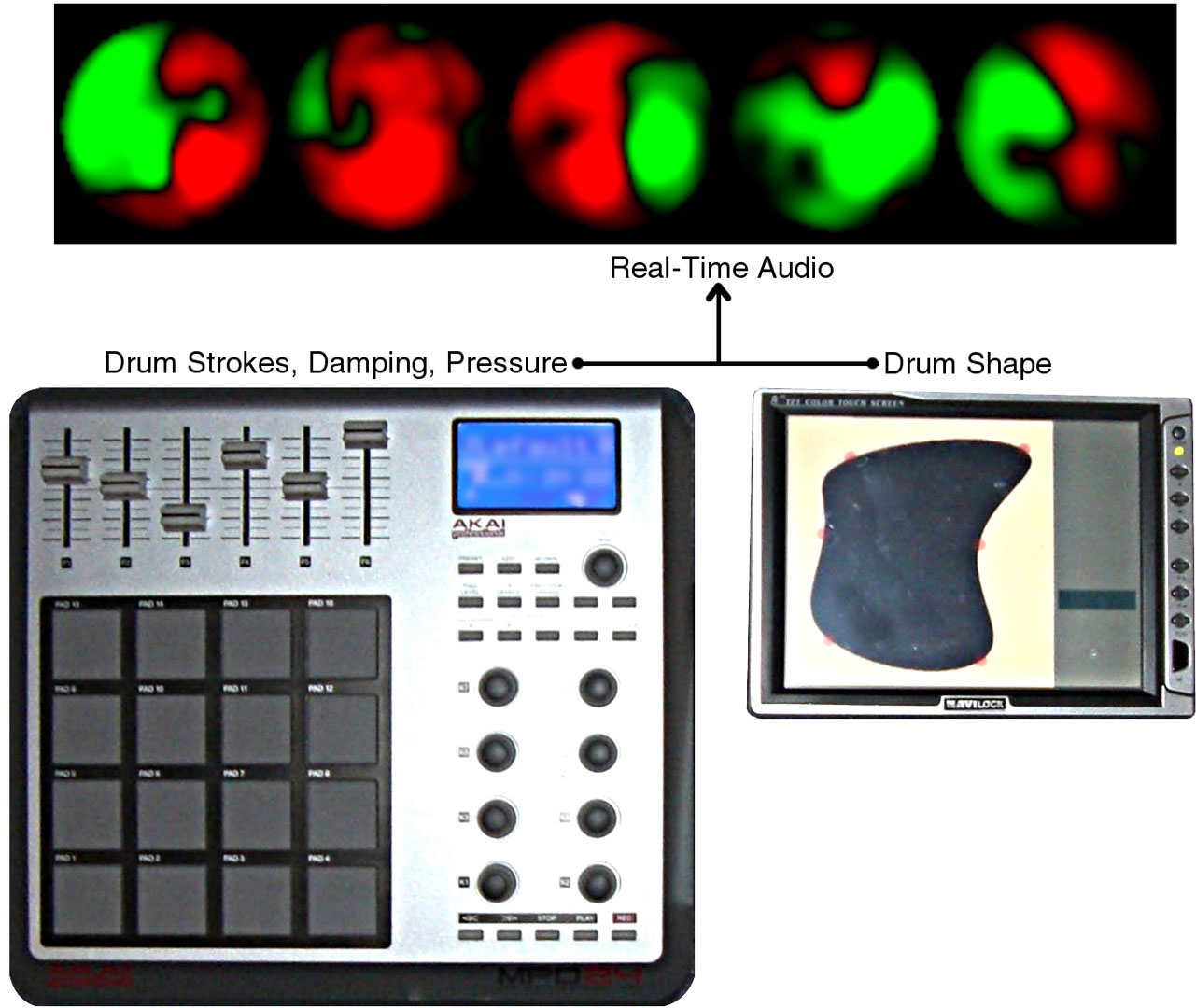“A malleable drum” by Tycowicz and Loviscach
Conference:
Type(s):
Title:
- A malleable drum
Presenter(s)/Author(s):
Abstract:
We present a virtual drum with a large range of interaction modes: The user can change the shape of the drum while playing it through a controller that offers hitting the virtual drum skin at 16 different points as well as simultaneously damping it and pushing it in. The real-time, low latency simulation leverages the computing power of a GPU, which allows the resolution of the mesh to be increased greatly. This and the interactive control of shape and local tension are differences to the work of Jones and Schloss [2007]. The synthesis of percussive sounds can be accomplished very efficiently through modal synthesis, where a set of eigenfrequencies is computed in a preprocessing step, see for instance Raghuvanshi and Lin [2006]. Modal synthesis, however, cannot easily handle changes in a drum’s physical properties. More versatile options are finite element methods and waveguide meshes [Murphy et al. 2007]. Aiming at a minimum complexity for the GPU-based implementation, we use a finite-difference method, as known from the simulation of shallow water waves.
References:
1. Jones, R., and Schloss, A. 2007. Controlling a physical model with a 2D force matrix. In Proc. of NIME ’07, 27–30.
2. Murphy, D., Kelloniemi, A., Mullen, J., and Shelley, S. 2007. Acoustic modeling using the digital waveguide mesh. IEEE Signal Processing Magazine 24, 2, 55–66.
3. Raghuvanshi, N., and Lin, M. C. 2006. Interactive sound synthesis for large scale environments. In Proc. of I3D ’06, 101–108.





